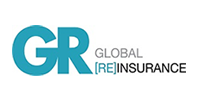Life assurance is prospering - but for how much longer? Will new stakeholder pensions give it a boost, or will world economics catch up and deal
it a blow? Chris McKevitt investigates.
The life assurance industry trebled the value of its yearly premium income in five years, reaching £4.7bn in 1999, the most recent year for which aggregate statistics for the country's 21 life offices are available. The pace of growth mirrors that of the economy.
In 1999 alone, life premiums rose 40.5%. The total for 1999 was equivalent to 6.8% of GDP.
Five years previously, the total income figure was £1.7bn, giving an annual rate of increase of just under 30% per annum - and closer to 50% for single premium business.
Single premium business outstrips annual premium business within the life sector by a ratio of around seven-to-one.
Buoyant figures
While industry figures for 2000 are not yet published, individual companies say it was a good year, though the rate of growth in single premium business has cooled.
For instance, Ark Life, AIB Group's domestic bank assurance arm - and one of the big four life offices - reported a 35% increase in single premium business to £431m in 2000, compared to £320m in 1999. There was also a 21% increase in new regular premium business in 2000 to £81.2m.
Meanwhile, Ark Life's rival, Bank of Ireland subsidiary Lifetime, reported a similarly upbeat 2000, with a 30% increase in new business to £105m. Sales of lump sum investment bonds were £251m, up 51% on the same period the previous year.
Regular premium business was up 16% on 1999 at £63m and protection sales increased by 19% from £9.7m in 1999. In particular, the company noted continued strong growth in the self-employed and company director pension markets.
The Irish Insurance Federation (IIF) says that, commercially, the life industry has been enjoying a good few years thanks to the numbers in work and the strength of the economy.
IIF life manager Jennifer Hoban says: "The market has been growing a lot over the past five years." She adds the last year has seen the arrival of two new players - Quinn Life, which sells direct, and Anglo Irish Bank's recently launched assurance business, aimed at the high net worth market.
"It's very buoyant and more people than ever are investing," she says.
The future looks good, thanks to significant adjustments to the investment laws. New legislation has increased the attractiveness of life products while a mixture of market corrections and government intervention has served to dampen enthusiasm for other investments - notably share ownership and
the purchasing of second homes to rent.
Areas of concern
However, share issues involving mass participation by the public have not lived up to expectations.
The privatisation of Eircom left investors nursing a paper loss which they can never hope to recover, now that the company is about to be taken over by an investment consortium at a lower price per share than the flotation price.
The technology industry has also left many in the financial doldrums. Like everyone else who bought into technology funds and individual technology stocks, the results for those who stayed too long have been poor.
Meanwhile, the government has made purchasing a second property onerous for many buyers, with sharp hikes in the amount of stamp duty payable, while a shortage of available building land has seen the supply of new homes dry up.
High claims costs on non-life insurance is a problem. Motor and workplace accidents are a major cause of concern among insurers offering both life and non-life policies and there has been such a hardening of premiums, particularly on motor, that the government has threatened a cap on the level of premiums payable (see page 17).
Another area of concern is the relatively poor take-up of pension products in the workforce, at slightly under 50%.
Market research conducted for Lifetime Assurance in September 2000 showed that 40% of consumers said private pension provision was important but that they had made no provision for it.
"In doing so, they are not only putting their post-retirement lifestyle at risk, they are also missing out on the generous tax relief available," said Lifetime sales director Ronnie Flynn.
Facing the challenge
Despite poor public perception of life pensions, the insurance industry does not see a role for itself in raising awareness of the value of pensions among investors.
This is in marked contrast to the industry's vociferous contribution on road safety and its knock-on impact on the cost of motor insurance.
The IIF says its membership prefers to concentrate on product design and leave awareness-raising to other bodies, such as the Pensions Board.
Pensions promise to shape the industry in the medium term, following the introduction of Personal Retirement Savings Accounts (PRSAs), which are very similar to the stakeholder (see page 22).
Undoubtedly, PRSAs will require significant changes in strategy among brokers, whose share of the new annual premium business fell from 48% to 41% and increased only two per cent to 69% on the single premium end of the business.
Irish Life & Permanent chief executive David Went, speaking at the Insurance Institute of Ireland conference in May, was upbeat about the industry's ability to respond to the challenges it faces.
"The Irish economy remains poised to achieve above European average growth for many years to come," he said.
"The underlying demographics support the key product offerings of the financial services industry in general and the life and pensions industry in particular - and we have begun to transform the business culture in which we all operate."
Euro impact
On February 9, 2002, Irish notes and coins will cease to have legal tender, to be replaced by euro notes and coins. Since most commercial and personal lines insurance transactions are not cash-based, the change may not appear as dramatic as in other sectors, such as retail. However, that does not mean there is no work to be done.
The Irish Insurance Federation (IIF) has broached the issue on two key fronts. The first involves ensuring that insurance-related paperwork is as transparent and informative as possible. A single currency sub-committee has drawn up a code of practice, guaranteeing consumer protection in insurance documentation in the dual currency period.
The government has already issued a similar code, to which all businesses must adhere, but the IIF has decided to go one stage further by taking account of the particular features of insurance products.
From October, all billing must show prices in Irish pounds and euros. Insurers' quotations and renewal notices will be issued with both currencies indicated.
The IIF is also directing efforts towards a smooth transition to the new currency by insurance intermediaries, with much of the emphasis being placed on IT systems and staff training. The effort is every bit as concentrated as that leading up to Y2K.









































